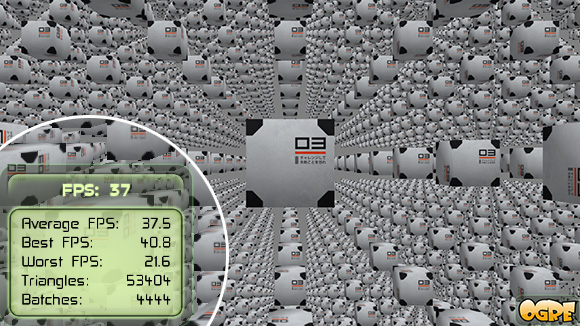

The rest of the engine continues to function exactly as before. Want an outdoor landscape? Again, use another plugin scene manager. Want to render indoor levels fast? Fine, use the BSP/PVS plugin scene manager which has already been written. It uses a flexible class hierarchy allowing you to design plugins to specialise the scene organisation approach taken to allow you to make any kind of scene you like. OGRE does not assume what type of game or demo you want to make. Patches are welcomed from community, but they undergo a strict review for both quality and cohesion with the Ogre philosophy before being accepted.
#OGRE ENGINE SOFTWARE#
The core development team is kept deliberately small, and all of its members are veteran software engineers with many years of real-world experience. OGRE uses sound design principles learned, tried and tested many times in commercial-grade software – the object-orientation mentioned in it’s moniker is just one of those approaches – frequent use of design patterns is another. Quality is favored over quantity, because quantity can come later – quality can never be added in retrospect. Every feature that goes into OGRE is considered thoroughly and slotted into the overall design as elegantly as possible and is always fully documented, meaning that the features which are there always feel part of a cohesive whole. OGRE is design-led rather than feature-led. Most other engines are also designed for one particular style of game or demo (e.g. Like any other software system this becomes their downfall as they become larger. Many of them have long features lists, but have the feel of a bunch of tech demos lashed together with twine, with no clear vision to hold them together. Many other engines, whilst technically impressive, lack the cohesive design and the consistent documentation to allow them to be used effectively. Why should I consider using OGRE (rather than the other zillion 3D engines out there)?

The principle is of collaboration and integration with other libraries, rather than assimilation of them, a standard tenet of component-based design. It can be more daunting for newer users who just want to build another FPS-style game, but for those people there are a growing number of existing frameworks using OGRE which provide a complete solution using a given combo of libraries but it’s important to realise that OGRE itself will always remain separate, flexible enough to be incorporated into any of these. Many experienced game developers have expressed their approval of this approach, because there are no inbuilt constraints. Instead, we provide a very integration friendly API and let YOU choose the other libraries, if you want them. If OGRE included all these features, we would be enforcing a particular set of libraries on you, with an inbuilt set of assumed requirements, and that’s not good design. Secondly, even within the games industry, requirements can vary widely for example a MMORPG will need a very different kind of network library than an FPS, and a flight sim will need a different kind of collision / physics system to fighting game. Why? Well, one reason is that not everyone who needs a 3D engine wants to make games, so we don’t assume that you do – you can use OGRE for games, simulations, business applications, anything at all.

OGRE can be (and indeed has been) used to make games, but OGRE is deliberately designed to provide just a world-class graphics solution for other features like sound, networking, AI, collision, physics etc, you will need to integrate it with other libraries, something several frameworks have done, and we have a collision / physics reference integration library as an example in our distribution. Also, take a look at the screenshots page to see for yourself the kinds of eye candy OGRE can pump out. Lots of things! See the features page for an up-to-date list of the current features. The class library abstracts all the details of using the underlying system libraries like Direct3D and OpenGL and provides an interface based on world objects and other intuitive classes. OGRE ( Object-Oriented Graphics Rendering Engine) is a scene-oriented, flexible 3D engine written in C++ designed to make it easier and more intuitive for developers to produce applications utilising hardware-accelerated 3D graphics.


 0 kommentar(er)
0 kommentar(er)
